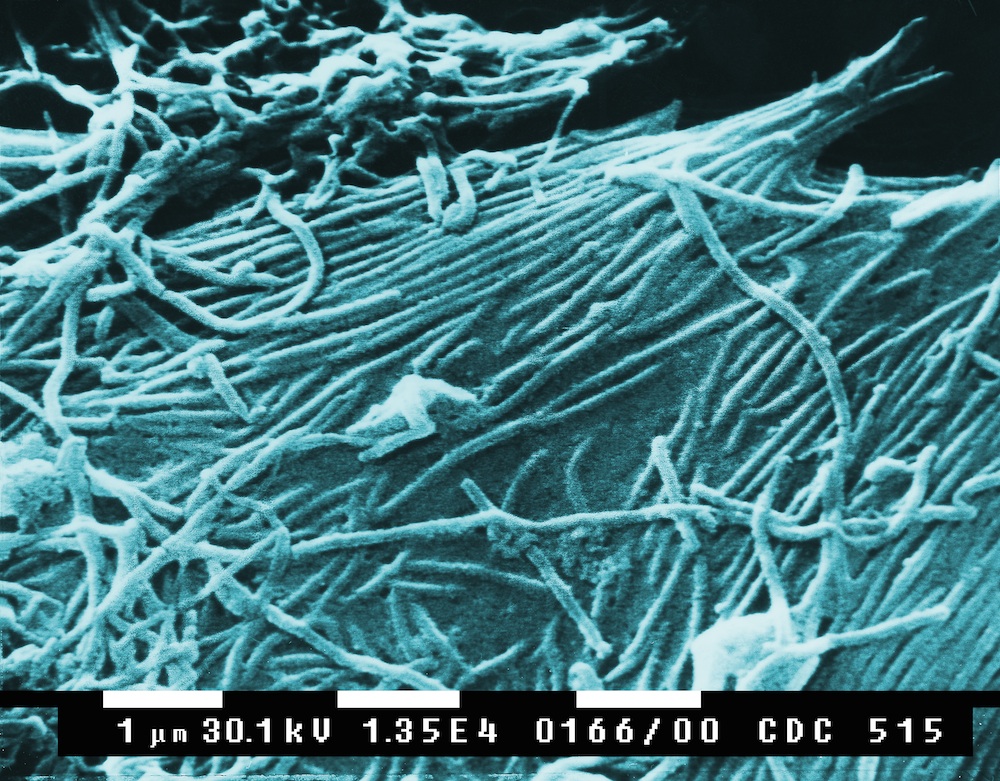Ebola Virus Lives on Hospital Surfaces for Days

The Ebola virus can live on surfaces in hospitals for nearly two weeks, a new study suggests.
Researchers tested how long the Ebola virus could survive on plastic, stainless steel and Tyvek, a material used in Ebola suits. The researchers also simulated different environmental conditions, including a climate-controlled hospital at 70 degrees Fahrenheit (21 degrees Celsius) and 40 percent humidity, and the typical environment of West Africa, at 80 F (27 C) and 80 percent humidity.
In general, the virus survived on surfaces for a longer time when in the climate-controlled conditions than in the West African environment, the study found. Under hospital-like conditions, the virus lived for 11 days on Tyvek, eight days on plastic and four days on stainless steel. The longest the virus was able to survive in the tropical conditions of the West African environment was three days, on Tyvek.
"Given the unprecedented [number] of health care professionals who became infected with Ebola virus during the outbreak, we are trying to elucidate all potential routes of transmission and potential for persistence of the virus," said study researcher Vincent Munster, chief of the Virus Ecology Unit at the National Institute of Allergy and Infectious Diseases' Rocky Mountain Laboratories in Hamilton, Montana.
"We found that [the Ebola virus] can persist on surfaces" in hospitals, so it's very important that workers follow protocols for thoroughly disinfecting and removing protective gear when leaving an Ebola treatment unit, the researchers wrote in their study. [Where Did Ebola Come From?]
The higher heat and humidity of the tropical conditions may be harmful to the virus, but the researchers still need to test whether it is the temperature, the humidity or a combination of the two that is causing the virus to degrade more quickly, Munster said.
The study also found that the Ebola virus could survive in water for up to six days. The potential for the virus to be spread through wastewater remains unknown, but the new finding "warrants further investigation into the persistence of the virus in aqueous environments, such as in wastewater or sewage canals," the researchers said.
Sign up for the Live Science daily newsletter now
Get the world’s most fascinating discoveries delivered straight to your inbox.
Finally, the study found that the virus could survive in dried blood for up to five days, and in liquid blood (outside the body) for as long as 14 days.
The study shows that, in a blood sample from an Ebola patient, "the virus would remain viable for a long time, Munster said. "Appropriate measures should be taken to safely dispose of these samples," he added.
The researchers noted that their experiment conditions were sterile, but in "real world" settings, contaminants, such as chemicals and bacteria, on surfaces could influence how long the Ebola virus survives.
The study will be published in the July issue of the journal Emerging Infectious Diseases.
Follow Rachael Rettner @RachaelRettner. Follow Live Science @livescience, Facebook & Google+. Original article on Live Science.

Rachael is a Live Science contributor, and was a former channel editor and senior writer for Live Science between 2010 and 2022. She has a master's degree in journalism from New York University's Science, Health and Environmental Reporting Program. She also holds a B.S. in molecular biology and an M.S. in biology from the University of California, San Diego. Her work has appeared in Scienceline, The Washington Post and Scientific American.









